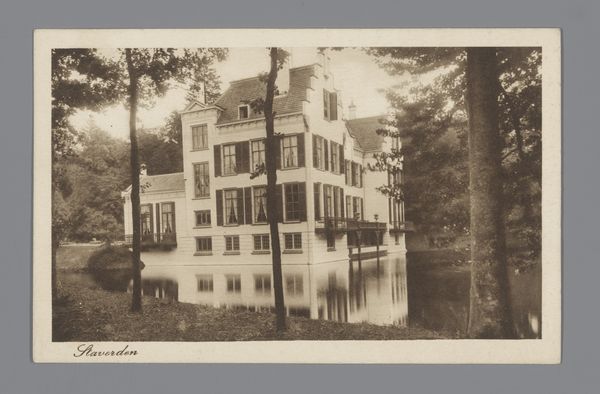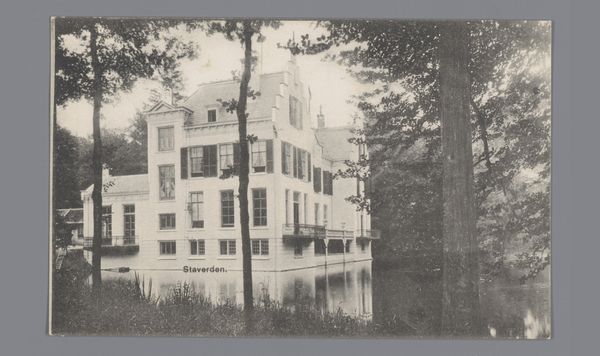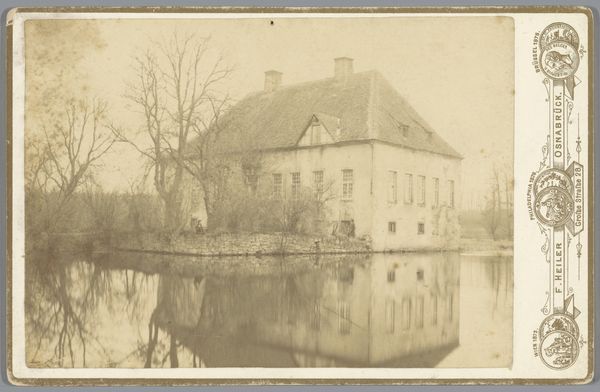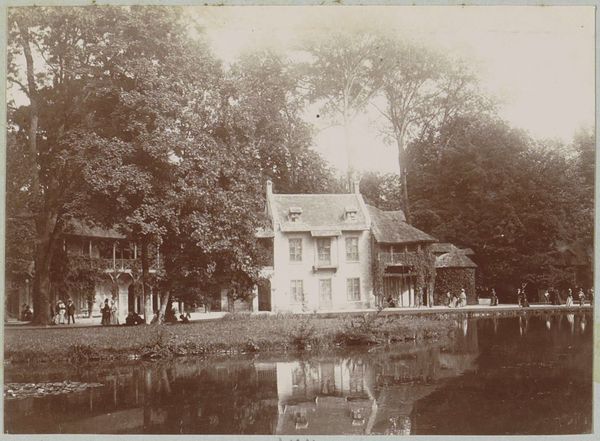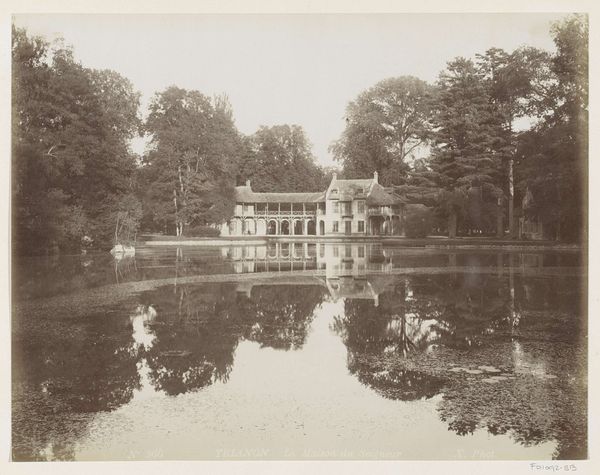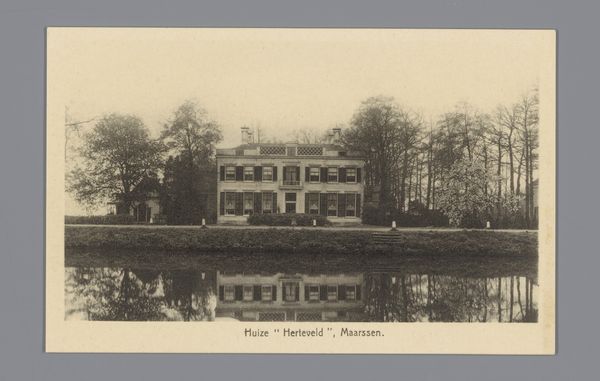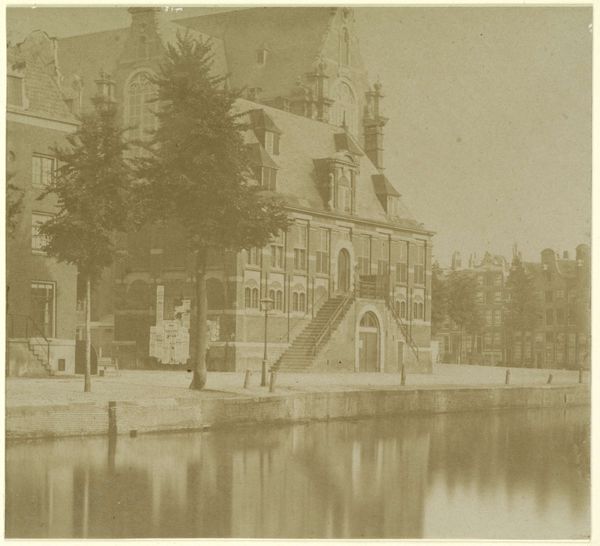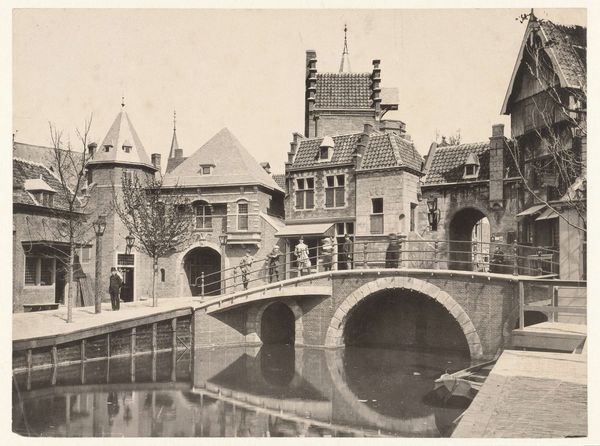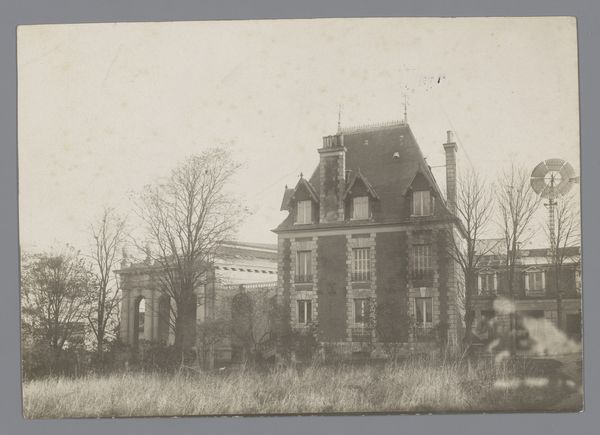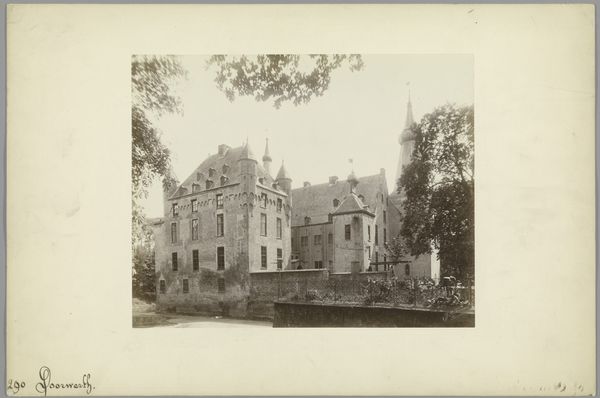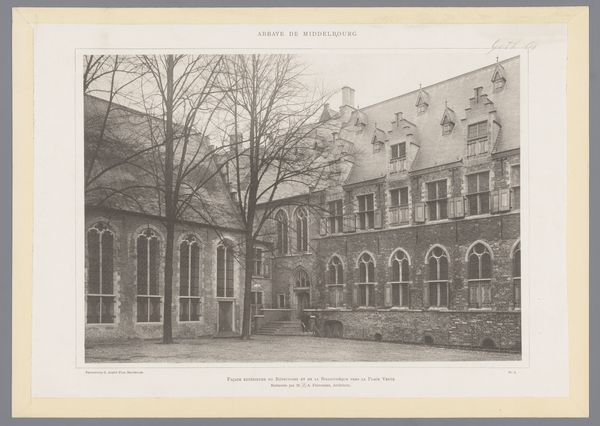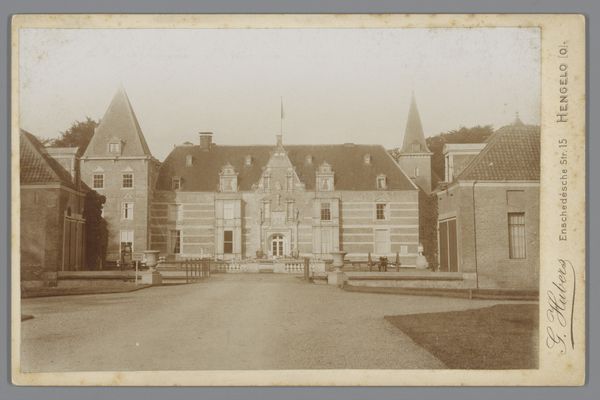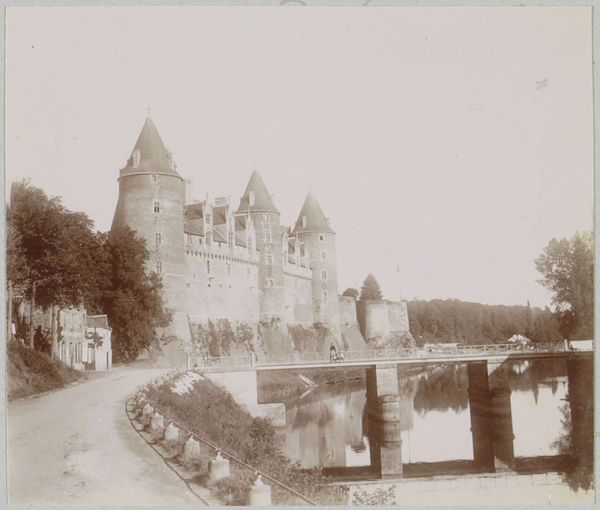
print, photography, architecture
# print
#
landscape
#
photography
#
architecture
#
realism
#
building
Dimensions: height 86 mm, width 139 mm
Copyright: Rijks Museum: Open Domain
Curator: Here we have an image entitled "Landhuis Staverden," a photographic print by M.C. Termaat, likely taken between 1880 and 1910. Editor: It has such a calm, almost haunting atmosphere. The way the building's reflection shimmers on the water gives it an ethereal feel, a quiet solitude. Curator: Yes, the mirrored effect certainly adds to the mystique. Staverden was historically linked to the Counts of Guelders, later becoming state-owned. A property held and deployed by a succession of elite individuals... I think it evokes something specific, an understanding of how wealth is materialized and then subsequently veiled. Editor: Exactly! Look at how the surrounding landscape is almost symmetrical, acting to further contain the structure in the photographic plane. Considering that it is a print, the materials that make up this artwork give a voice to labor and to the development of the industry of photography at the end of the nineteenth century. Curator: The estate carries potent historical symbolism, tied to nobility, power, and gendered aristocratic lines of succession—think about how such properties have historically passed between men. We should explore its association with gender, class, and its function as a material embodiment of societal stratification and dominance. Editor: Absolutely. Thinking of the social context here adds layers to how we interpret it. We could see how the house becomes representative of wealth, its presence tied directly to that of its social position of prominence. The landscape, in a way, then becomes the ultimate showcase for a social elite. Curator: So, viewing it not merely as a depiction of architecture but as a critical engagement with its historical role and the values embedded within its walls—and beyond. Editor: Yes. The photograph, then, is not just a pretty picture. It's documentation of both industrial process and the creation and the display of capital in the real world. Curator: Examining through that lens, one is impelled to see how buildings are rarely mute. Instead, they testify. Editor: Precisely. We can see not just architecture and material but the imprint of an entire societal system reflected in this single image.
Comments
No comments
Be the first to comment and join the conversation on the ultimate creative platform.
